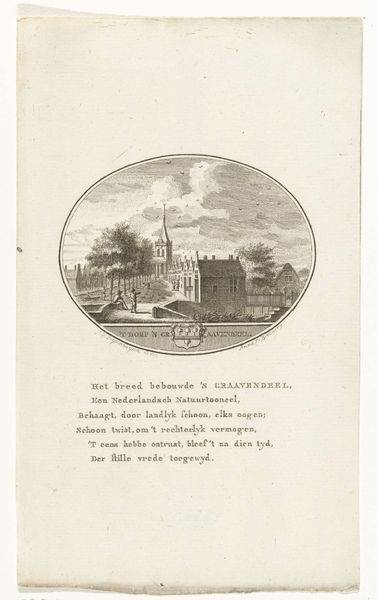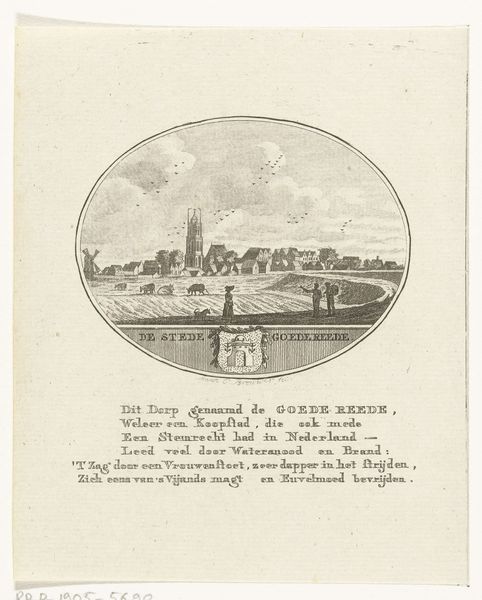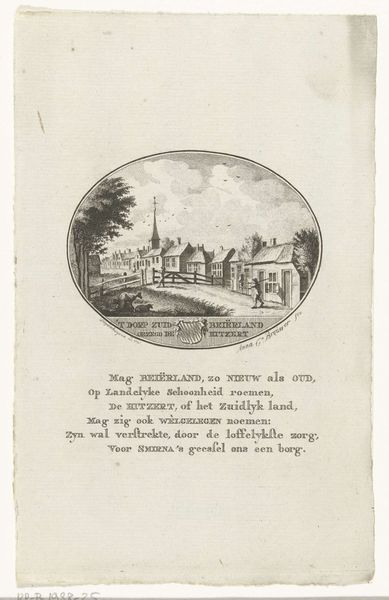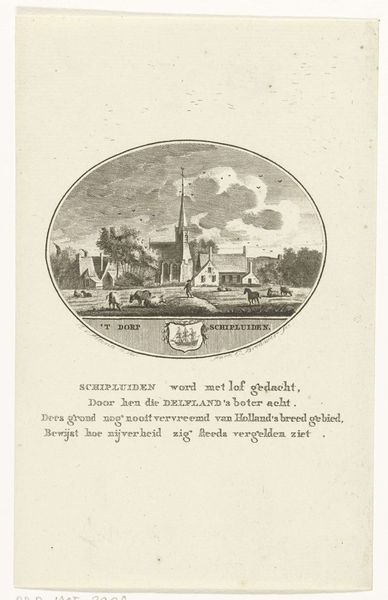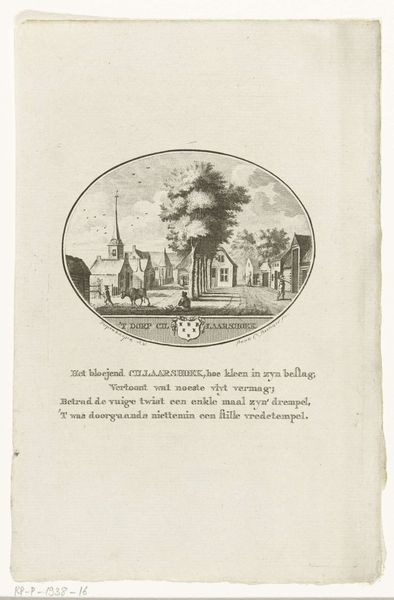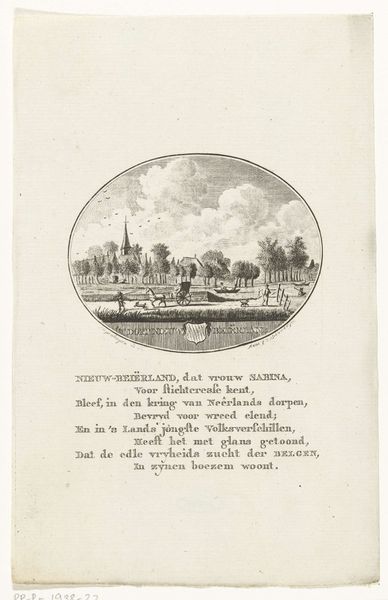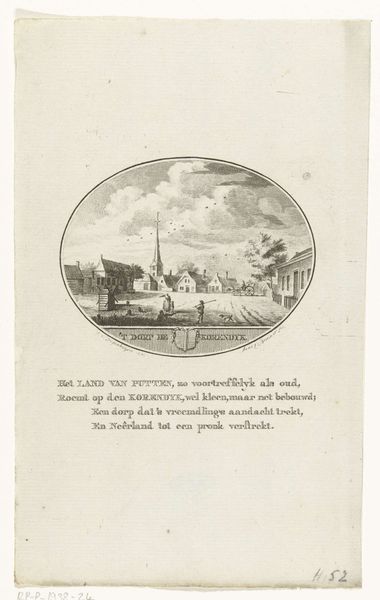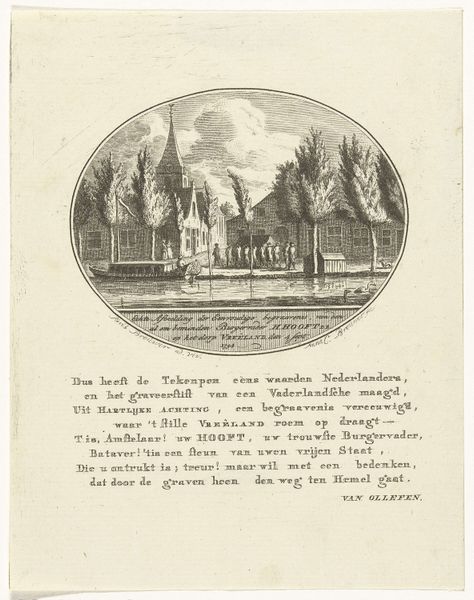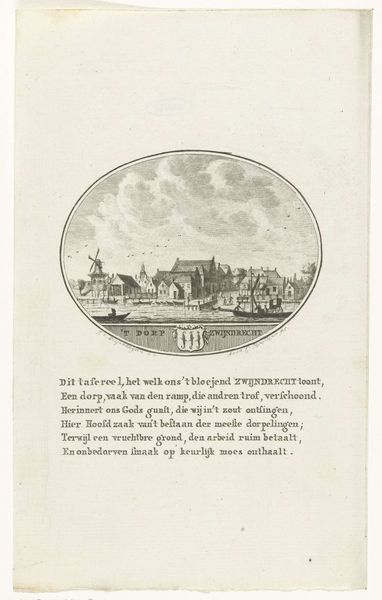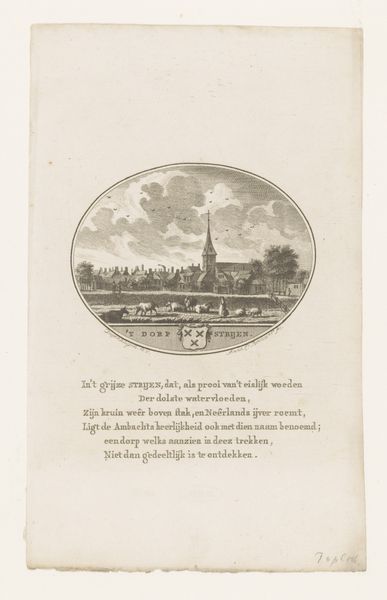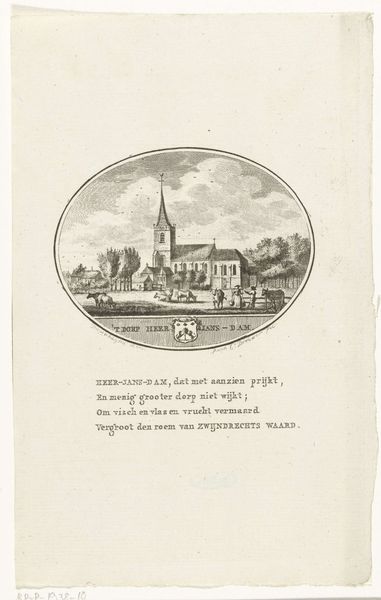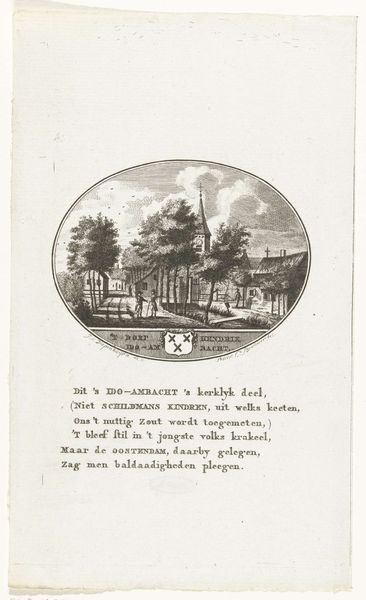
drawing, print, etching, engraving
#
drawing
#
dutch-golden-age
# print
#
etching
#
landscape
#
cityscape
#
engraving
Dimensions: height 220 mm, width 140 mm
Copyright: Rijks Museum: Open Domain
Curator: This engraving, titled "Gezicht op het gehucht Sint Anthoniepolder," by Anna Catharina Brouwer, dating from 1791 to 1793, immediately strikes me with its rather restrained quality. Editor: Yes, it does present as subdued. The etching, held within an oval frame, captures what appears to be a tranquil village scene. One almost overlooks how prints like these, distributed widely, formed visual knowledge for an expanding public sphere. Did Brouwer have connections to the village? Curator: The Rijksmuseum tells us Brouwer made many such topographical prints. Here, look at the deliberate etching and engraving marks—how she's used different techniques to create tonal variation in the sky versus the water, for example. It suggests a calculated process intended for a broader audience engaging with the details of the landscape. Editor: Quite. Note also the accompanying text beneath the image; It’s more than just descriptive. The accompanying poem reinforces ideas of Dutch identity and resilience to floods. It almost seems designed to inspire civic pride. But to think of Brouwer, a woman, creating and distributing these… it's also a lesson in gendered labor practices, of artistic creation being more collaborative than history has traditionally recognized. How prints enabled both artistic production *and* ideological circulation. Curator: That’s precisely the intersection that fascinates me. This isn't simply an idyllic image, is it? The scale of the printing likely reveals much about its reception too: would this have been viewed at home? Purchased by people that had direct connections to the polder? The availability of reproductive methods of printmaking suggests a commercial motive alongside any artistic considerations on Brouwer's part. Editor: Precisely. So, we have the materials: etching and engraving on paper; the artist, Brouwer; and the subject: the Polder. But all contained and mediated by larger networks of meaning production: ideas of Dutch identity and local pride. Curator: Well, this small print certainly opens up a much larger landscape of historical considerations! Editor: Agreed; it speaks volumes about the forces that were at play during its time.
Comments
No comments
Be the first to comment and join the conversation on the ultimate creative platform.
